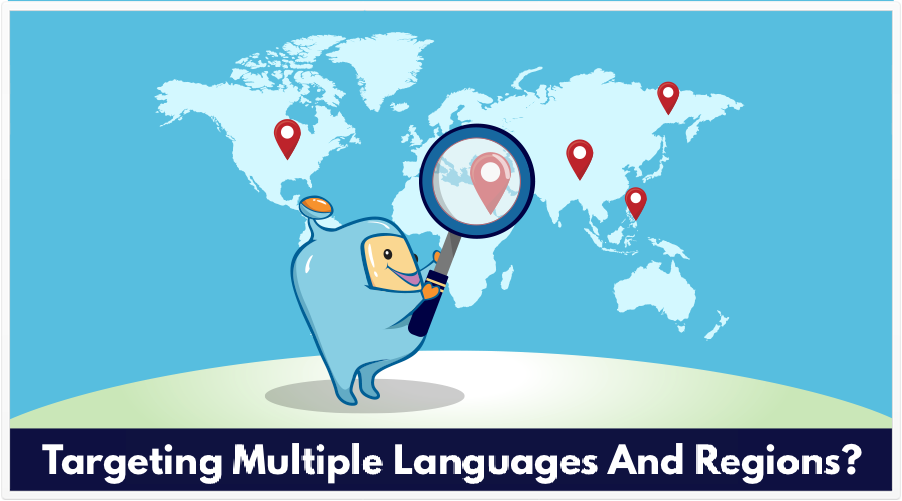
What I mean by a non-geo TLD (top-level domain) is, for example, the .com, .net, and .org TLDs. Those aren’t country-specific (are non-geo-targeted).
TLDs like .ca (Canada), .uk (United Kingdom), .in (India), are country-specific (geo-targeted TLDs, or counry-code TLDs (ccTLDs)).
Basically, a response that a Google employee gave discussed 2 ways to target languages and locations are with hreflang and by specifying in Google Search Console.
The question was asked during the most recent English Q&A session that Google often holds. These sessions usually feature a Google employee (in this case, John Mueller, who’s a Search Advocate), who answers submitted and live questions.
(Before I go further, I wish to refer you to this article, titled, Overview of international and multilingual site topics. As its title implies, it gives you an overview of this topic, and the 3 articles it lists serve to give you a more comprehensive understanding than what’s covered here.)
hreflang
“If I want to target country plus language as well…so…inside the hreflang code I have to mention language plus country code, right?”
John Mueller answered, “Yes.”
hreflang is basically an HTML attribute that’s used to designate that a certain part of a website (like a subdomain or subdirectory) is for a specific language and location.
For example, for English, Great Britain, the value of that designation would be en-gb (the language comes first).
In Search Console
The participant also asked, “Now what should I do inside the Google Search Console if I am targeting multiple countries, like if suppose I’m targeting 10 countries now. How should I make [the Console] understand to the console that I am targeting these 10 countries because the Console is…only supporting only one country.”
(From listening to his mention of “only supporting one country,” I think he’s referring to the fact that, if you want to target multiple countries, you have to designate them separately, as John clarifies in his response.)
Subdomains or Subdirectories
John’s response was, “Yeah so if you want to do geo-targeting, you have to use either subdomains or subdirectories per country, and then you add those subdomains or subdirectories to Search Console separately.”
…But You Can’t Do Geo-Targeting for Country Code TLDs
After a brief interjection, John continued, “But if once you have them added separately, and if these are generic top-level domains, you can set the geo-targeting individually.
“So it’s like yourwebsite.com/fr for France and then you add that to Search Console and in Search Console in the geo-targeting section, then you can say ‘this website is for France.’”
Switching to the notion of country TLDs, John continued, “If you have a like a country code top-level domain, like .in or .uk or something then you can’t do geo-targeting.”
The Best Approach to Geo-Targeting
Above, I mentioned the article, Overview of international and multilingual site topics, serves as a good overview.
That article links to another one that’s more closely related to our topic: Tell Google about localized versions of your page. (Though it’s an authoritative content piece from Google, and it discusses 3 ways to tell Google about local areas of your site, it doesn’t mention the Google Console option, which was discussed above.)
So, if I were going to geo-target a (non-country-specific) top-level domain, I’d be very organized about this. I’d decide whether to use subdomains or directories.
Then, I’d create a list of all the URLs of my original content pages (or, for a big site, at least the main ones to begin with), and make a list of each of the new language- and/or region-specific URLs that would correlate to each of the original URLs.
For example, if my about page was mysite.com/our-story, and I decided to use subdomains for my expansion, I’d have something like fr.mysite.com/notre-histoire (French, our story).
Then, I’d go through the articles mentioned in this news item, and choose the best courses of action. I don’t see any issue in using multiple methods to make language and regional designations (such as HTML, HTML headers, sitemap, and Search Console).
In fact, in some cases, you may need to use different methods (such as, I imagine, if you wanted to designate a specific part of your site for all users of a given language, no matter which country they’re in).
Here’s a video that should be of insight:
But…What About…
…duplicate content?
If, say, you have English UK and American English sections of your site, is there a concern for duplicate content?
Well, here’s what it says on this page: ‘Localized versions of a page are only considered duplicates if the main content of the page remains untranslated.’
Yes, that quote seems a bit unclear. (When it comes to duplicate content, I always remember that duplicate content is a filter, not a penalty. If Google thinks that one of your pages is the best answer to a given query, then all things being equal, it’ll display a page from your site.)
In summary, I hope this article has been somewhat resourceful for you, and that you have some idea of the detail required to successfully expand your site’s coverage.